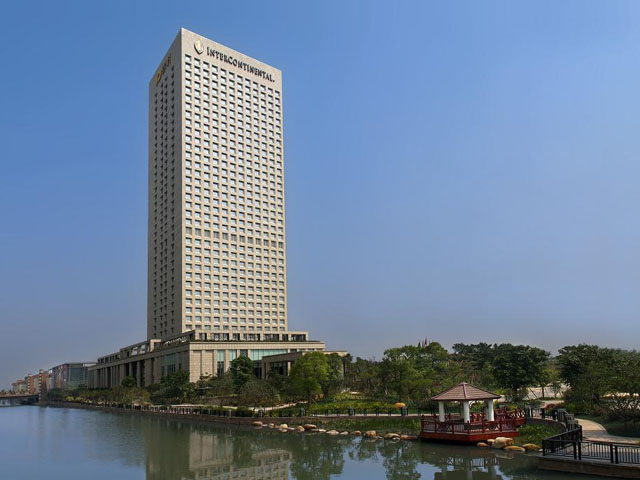
Huguang Yan Lake is the only maar lake formed at a crater in China. The deep lake water neither floods in the rain nor dries in the drought all year around. It is very interesting that dried leaves fall into the lake all year around, but they disappear and vanish very quickly. So you can not see any dried leaves in the lake. There is no snake or frog in the lake but lots of shrimps and fish are living here. The clean water can be drunk directly. The air in the scenic spot is fresh. With singing birds and fragrant flowers, the scenic spot really makes a perfect tourist resort. Welcome to Guangdong for Guangzhou Fair, you could go to Huguangyan National Scenic Spot for a trip.
With moderate climate and beautiful scenery, Huguangyan Lake is an ideal place for sightseeing, scientific research as well as healthy work. Water in the lake is as clear as a mirror. All year round, lots of leaves fall into the lake with water, but disappeared and vanished very quickly. It is more interesting that in the lake, there is no frog, no snake in it while lots of shrimp and fish are living. Still, there are many natural wonders for discovering.
Maar Lake is a unique type of lake in geological structures,and little is known about micro-bial diversity in various Maar Lakes worldwide.In order to understand the community structures of culturable bacteria in Huguangyan Lake,a typical Maar lake in South China,BOX-PCR was introduced as a screening technique for bacterial isolates that were obtained from three water depths in winter and summer through the general R2A plates and in situ lake-water agar medium.
With moderate climate and beautiful scenery, Huguangyan Lake is an ideal place for sightseeing, scientific research as well as healthy work. Water in the lake is as clear as a mirror. All year round, lots of leaves fall into the lake with water, but disappeared and vanished very quickly. It is more interesting that in the lake, there is no frog, no snake in it while lots of shrimp and fish are living. Still, there are many natural wonders for discovering.
Maar Lake is a unique type of lake in geological structures,and little is known about micro-bial diversity in various Maar Lakes worldwide.In order to understand the community structures of culturable bacteria in Huguangyan Lake,a typical Maar lake in South China,BOX-PCR was introduced as a screening technique for bacterial isolates that were obtained from three water depths in winter and summer through the general R2A plates and in situ lake-water agar medium.




 RSS Feed
RSS Feed